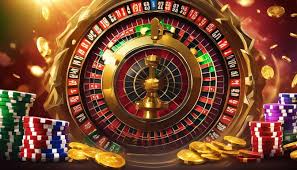Slot machines, often referred to as “jawara79,” have been an integral part of the gambling and entertainment industry for well over a century. These mesmerizing games of chance have captured the hearts of millions worldwide, creating an indelible mark on the gambling landscape. From their humble beginnings to the sophisticated digital age, slots continue to enthrall and captivate players of all ages and backgrounds.
A Brief History
The genesis of the slot machine dates back to the late 19th century. Charles Fey, a mechanic from San Francisco, is credited with inventing the first mechanical slot machine in 1895, named the “Liberty Bell.” Featuring three spinning reels with five symbols—diamonds, spades, hearts, horseshoes, and the Liberty Bell—Fey’s creation marked the birth of an enduring phenomenon.
Initially, these machines were simple, mechanical devices found in bars, saloons, and land-based casinos. Players would pull a lever to set the reels in motion and hope for a winning combination. Over time, technological advancements led to the evolution of electronic and digital slots, introducing innovations like multiple paylines, bonus rounds, and eye-catching graphics.
The Mechanics of Slot Machines
Modern-day slots, whether found in brick-and-mortar casinos or online platforms, operate on a similar principle. A random number generator (RNG) ensures fair and unbiased results, generating thousands of number combinations per second. When a player initiates a spin, the RNG stops at a specific combination, determining the outcome.
Reels adorned with various symbols, such as fruits, bars, lucky sevens, and thematic icons, spin on the screen. Winning occurs when matching symbols align across predefined paylines. The payouts vary depending on the specific symbols and their rarity in forming winning combinations.



